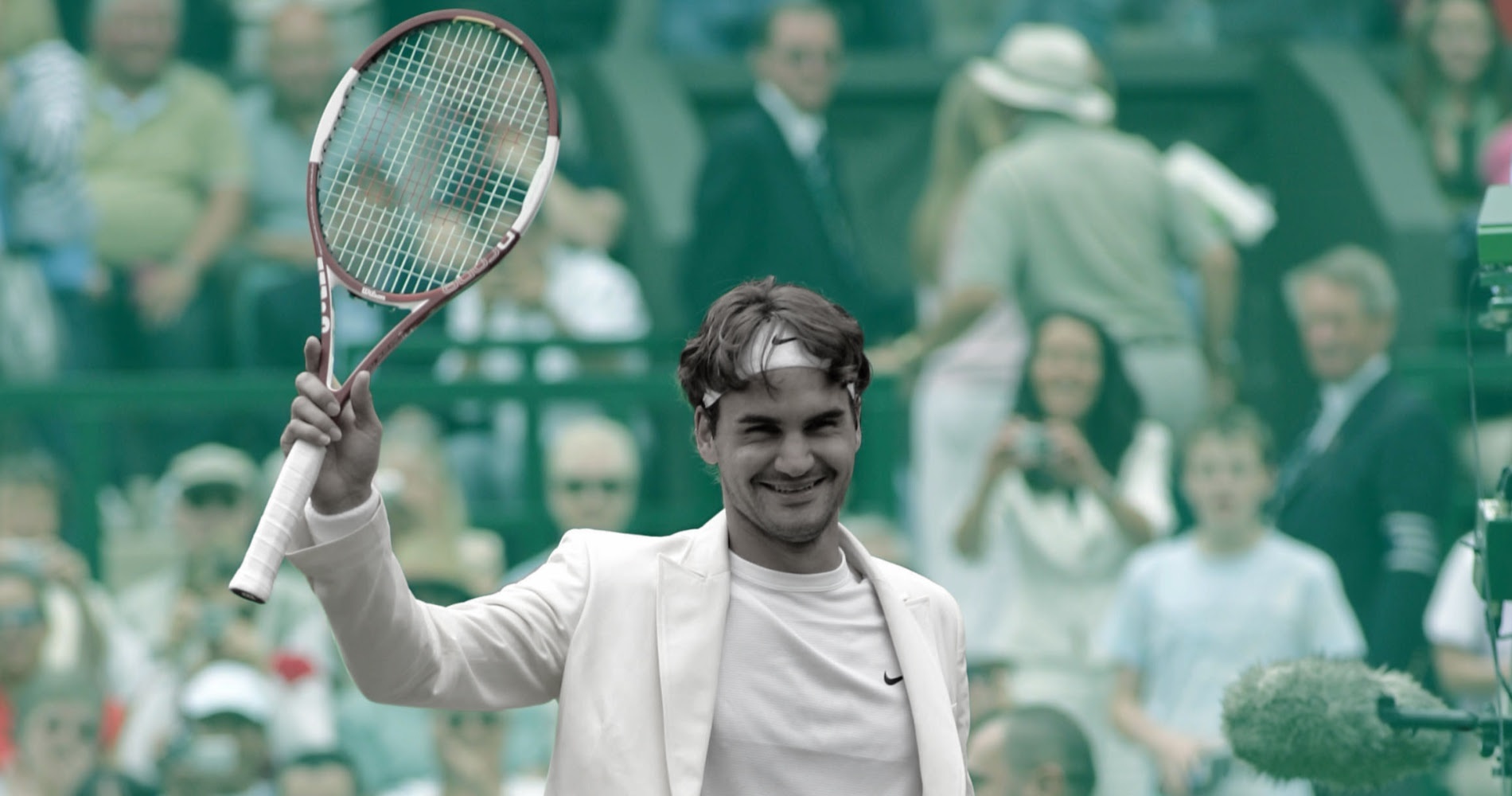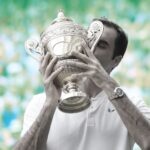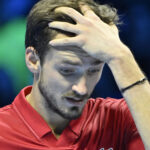June 27, 2006: The day Roger Federer beat Bjorn Borg’s record of 41 consecutive wins on grass
Every day, Tennis Majors takes you back in time to relive a tennis event which happened on this specific day. On June 27, 2006, Roger Federer beat Bjorn Borg’s record of 41 consecutive wins on grass, which the Swede held since 1981
 Federer – On this day
Federer – On this day
What happened exactly on that day?
On this day, June 27, 2006, Roger Federer beat Bjorn Borg’s record of 41 consecutive wins on grass, which the Swede held since 1981. To extend his own winning streak on this surface, the Swiss easily edged Richard Gasquet in the first round of Wimbledon (6-3, 6-2, 6-2), a tournament he had already won three times in a row since 2003.
The players: Roger Federer and Richard Gasquet
- Roger Federer, the world No 1
The Swiss genius, aged 24, was world No 1 without a break since February 2, 2004. Since 2003, he won seven Grand Slams: the Australian Open (2004, 2006), Wimbledon (2003, 2004, 2005) and the US Open (2004, 2005). In 2006, which would happen to be his best year, he had already claimed seven titles before Wimbledon, including the Australian Open, and three Masters 1000 events.
On top of that, he had finished runner-up to Rafael Nadal in Roland-Garros – the Spaniard was the main reason Federer hadn’t won the French Open yet: he lost against him in the semi-final in 2005 (6-3, 4-6, 6-4, 6-3) and in the final in 2006 (1-6, 6-1, 6-4, 7-6). Since the start of the year, he had a record of 49 wins and only four losses, all of them against Rafael Nadal, the only player who had been able to edge him so far.

- Richard Gasquet, the rising star
Richard Gasquet, from France, was born in 1986. In the early years of his career, he was nicknamed “the little Mozart of tennis”, as he was particularly good at a very young age. In 2002, a few weeks before turning 16, he became the youngest player to win a match in a Masters 1000 event, beating Franco Squillari in the first round of Monte-Carlo (7-6, 3-6, 7-5).
In 2005, he was one of only four players who managed to beat Roger Federer (6-7, 6-2, 7-6). This feat took him to the semi-final of Monte-Carlo, which was his best result at the time, before he claimed his first title in Nottingham, on grass (edging Max Mirnyi, 6-2, 6-3). He reached the fourth round at both Wimbledon and the US Open, which remained his best Grand Slam results at the time. In 2006, he successfully defended his title in Nottingham, beating Jonas Bjorkman in the final (6-4, 6-3), proving himself a dangerous grass court player.

The place: Wimbledon, south-west London
Wimbledon is the oldest and the most prestigious tennis tournament in the world. Held by the All England Lawn Tennis and Croquet Club since 1877, it moved into its current location in 1922, the same year when the Centre Court was built. Considered by many as the most intimidating court in the world, with its famous Rudyard Kipling quote above the entrance (“If you can meet with triumph and disaster and treat those two impostors just the same”), the Centre Court had seen the best players of all time competing for the title.
After the US Open switched to clay and then hard courts in the 1970s, and after the Australian Open switched to hard courts in 1988, Wimbledon remained the only Grand Slam tournament to be played on grass, a surface that is usually more suitable for serve and volley players. Not only did Wimbledon keep its surface, but it also maintained old-fashioned traditions such as the white dress code.
The facts
In 2006, when Wimbledon started, Roger Federer had not been defeated a single time on grass since 2002, when he was beaten in the first round at the All England Club by Croatian Mario Ancic (6-3, 7-6, 6-3). His winning streak had started the following year, in Halle, when he edged Sargis Sargsian in the first round (7-5, 6-1). After claiming the title in Germany, Roger Federer then conquered his first Grand Slam crown in Wimbledon, defeating Mark Philippoussis in the final (7-6, 6-2, 7-6).
Since then, he had repeated the same feat in 2004 and 2005, claiming the title in Halle before triumphing in the temple of tennis. In 2006, when he beat Tomas Berdych in the final in Halle (6-0, 6-7, 6-2), he evened Bjorn Borg’s record of 41 matches on grass without a loss. During these 41 matches, the Swiss had dropped only 12 sets!
Federer’s level of confidence was then high enough to remain calm, although facing Richard Gasquet in the first round of Wimbledon was not an easy draw. In 2005, the Frenchman had been one of the few players to beat him, and even though he had taken his revenge several times already, Gasquet was a good grass-court player. In fact, they had just faced each other in the round of 16 in Halle, and Federer had hardly prevailed (7-6 6-7 6-4). For the young Frenchie, who had high expectations on a surface that suited him well, playing Federer in the first round was bad luck.
This time, maybe overwhelmed as, according to the tradition, he was opening the tournament against the defending champion on the Centre Court, Richard Gasquet was no match against a determined Federer. Very aggressive, winning 21 out of 25 points at the net, the Swiss edged Gasquet 6-3, 6-2, 6-2 in an hour and 12 minutes.
Roger Federer had just beaten Bjorn Borg’s record with this 42nd consecutive win on grass. Probably more focused on his quest of a fourth Wimbledon crown, Federer still gave more credit to Borg’s streak, as all of his matches were won at Wimbledon. The Swiss also stated that with five Wimbledon titles in a row, Borg had still achieved a much bigger feat.
What next
Roger Federer would go on to claim a fourth consecutive Wimbledon title in 2006, edging Rafael Nadal in the final (6-0, 7-6, 6-7, 6-3). Later in 2006, he would win the US Open for the third time, making 2006 his peak season with 12 titles, including three Grand Slams, and a record of 92 wins and only five losses.
The Swiss, who was praising Borg’s past performances, would even the Swede’s record of five Wimbledon titles in a row – and his winning streak would extend to 65 matches, including 41 at the All England Club, the same as Borg. It would be ended by Rafael Nadal, who would prevail against Federer in a legendary Wimbledon final in 2008 (6-4 6-4 6-7 6-7 9-7).
Nonetheless, Federer would add three more Wimbledon titles to his list of achievements (2009, 2012, 2017), beating Pete Sampras’ record of seven crowns at the All England Club, and finished his career with a total of 20 major trophies.
Richard Gasquet would reach his highest ranking as world No 7, in 2007. Three times, he would reach the semi-final of a Grand Slam tournament (Wimbledon 2007 and 2015, US Open 2013), and he would claim 16 titles on the tour, the most important one in Doha, in 2013.









